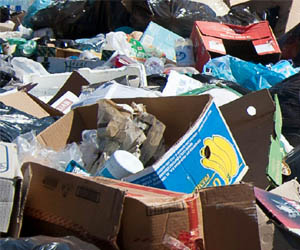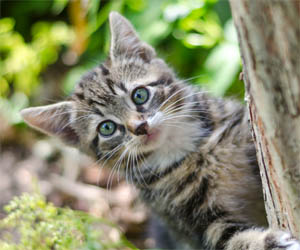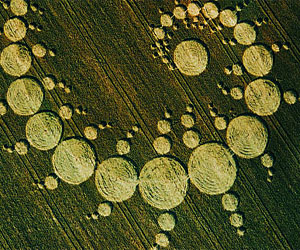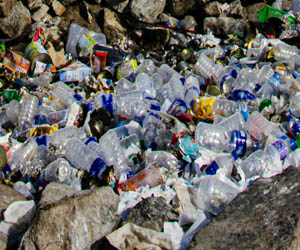


Turning Trash Into A Sustainable Power Source

In the modern era of environmental consciousness and sustainable energy solutions, the concept of producing clean electricity from waste has emerged as a game-changer. The traditional approach of burying waste in landfills is increasingly being replaced by innovative technologies that not only manage waste efficiently but also generate electricity in an environmentally responsible manner. This approach represents a paradigm shift, turning trash into a valuable resource and a sustainable power source.
The Waste-To-Electricity Process
Waste-To-Electricity (WTE) technology is the driving force behind the transformation of waste into clean electricity. It involves various processes such as incineration, gasification, and pyrolysis, which convert waste materials into heat, which is then used to produce electricity. The energy generated can be used to power homes, businesses, and industries, reducing the strain on conventional energy sources and decreasing our carbon footprint.
Diverse Waste Streams
WTE technology is versatile in its application, as it can process a wide range of waste materials. This includes municipal solid waste, biomass, agricultural residues, and even non-recyclable plastics. By harnessing the energy content of these waste streams, we not only address waste management concerns but also contribute to a sustainable energy mix.
Environmental Benefits
Clean electricity from waste offers a host of environmental advantages. One of the most significant benefits is the reduction of greenhouse gas emissions. WTE facilities are designed to burn waste at high temperatures, effectively minimizing the release of harmful pollutants into the atmosphere. This contributes to cleaner air and helps combat climate change.
Moreover, WTE technology significantly reduces the need for landfills, which are notorious for contaminating groundwater and emitting harmful gases. By diverting waste from landfills, we mitigate the environmental impact of waste disposal and reduce the risk of soil and water contamination.
Reducing Dependency On Fossil Fuels
A crucial aspect of clean electricity from waste is its ability to reduce our reliance on fossil fuels. As we utilize waste materials to generate electricity, we decrease the demand for non-renewable resources. This shift promotes a more sustainable energy ecosystem and aligns with global efforts to transition away from fossil fuels.
Economic And Social Benefits
Beyond its environmental advantages, WTE technology brings economic and social benefits to communities. WTE facilities create jobs, stimulate local economies, and provide a stable source of revenue by selling surplus electricity to the grid. This not only fosters economic growth but also enhances the sustainability of waste management practices.
Challenges And Considerations
While the concept of clean electricity from waste is promising, it does face challenges, including public perception and concerns about emissions from WTE facilities. To overcome these challenges, stringent regulations, advanced emission control technologies, and effective waste sorting systems must be implemented.
Clean electricity from waste represents a significant stride toward a cleaner and more sustainable energy future. It not only addresses the issue of waste management but also contributes to reducing carbon emissions and our dependence on fossil fuels. To fully harness the potential of clean electricity from waste, continued investment in technology, research, and responsible waste-to-energy practices is essential. This way, we can transform trash into a valuable resource, turning a waste problem into a clean energy solution.
Understanding Our Feline Friends
 Self-Sufficiency At Its Finest
Self-Sufficiency At Its Finest
Cats are renowned for their self-sufficiency. Unlike some pets that require constant attention and care, cats are content to spend time alone. They are skilled hunters, and their instincts drive them to find food and take care of their basic needs without human intervention. This independence is deeply ingrained in their DNA.
Solo Explorers
Cats are natural explorers. They possess a sense of adventure that drives them to investigate their surroundings. Whether they're navigating the garden, chasing a shadow, or scaling a bookshelf, cats are always on a quest to satisfy their curiosity. Their solitary explorations are not a sign of detachment but rather a reflection of their innate inquisitiveness.
Selective Socializing
While cats may appear solitary, they are not necessarily antisocial. They are selective in their social interactions. Cats will form strong bonds with their human companions and other pets if given the opportunity. The independence of cats is often misunderstood as aloofness, but in reality, they enjoy companionship on their terms.
Maintaining Dignity
Cats are known for their dignified demeanor. They prefer to maintain their composure and rarely seek attention in the same way that dogs might. This does not mean they don't enjoy affection; it simply means they prefer it on their own terms.


 REM (Rapid Eye Movement) Sleep: The REM stage is where most vivid, memorable dreams occur. During REM sleep, our brains become highly active, and our bodies essentially become paralyzed to prevent us from acting out our dreams physically. REM dreams are often emotionally charged and may reflect our deepest desires, fears, and concerns.
REM (Rapid Eye Movement) Sleep: The REM stage is where most vivid, memorable dreams occur. During REM sleep, our brains become highly active, and our bodies essentially become paralyzed to prevent us from acting out our dreams physically. REM dreams are often emotionally charged and may reflect our deepest desires, fears, and concerns.
Lucid Dreaming: Lucid dreaming is a unique state where the dreamer becomes aware that they are dreaming. This state allows individuals to take control of the dream's narrative, explore their subconscious, and even transcend the boundaries of reality. Lucid dreaming is a fascinating blend of self-awareness and creativity within the dream state.
Nightmares: Nightmares are dream states characterized by intense fear, anxiety, or horror. These unsettling dreams can be triggered by stress, trauma, or unresolved emotions, serving as a natural coping mechanism for processing negative experiences.
Daydreaming: Daydreams occur when an individual's mind drifts away from their immediate surroundings and focuses on an imagined scenario, thought, or memory. While daydreaming can occur during waking hours, it is, in essence, a form of dream state where the mind creates its own narrative.
Hypnagogia And Hypnopompia: These are transitional states between wakefulness and sleep. Hypnagogia occurs as you drift into sleep, while hypnopompia takes place upon waking. These states often produce vivid imagery, fleeting thoughts, or hallucinations, offering a glimpse into the boundary between wakefulness and dreams.
Understanding And Fulfilling Their Needs
 2. Regular Veterinary Care
2. Regular Veterinary Care
Routine veterinary care is vital for monitoring and maintaining a cat's health. Regular check-ups, vaccinations, and preventive care help detect health issues early and ensure your cat receives the necessary treatments to stay happy and healthy.
3. Mental And Physical Stimulation
Cats are curious creatures that require mental and physical stimulation. Engage your cat with toys, puzzles, and interactive playtime. Activities like chasing feather wands, laser pointers, and treat-dispensing puzzles provide your cat with both mental and physical exercise, which contributes to their happiness.
4. Grooming And Hygiene
Grooming plays a significant role in a cat's happiness. Regular brushing helps prevent matting, reduces shedding, and provides an opportunity for bonding between you and your feline companion. Some breeds, particularly long-haired ones, may require more frequent grooming.
5. Safe Environment
Creating a safe and comfortable environment is essential for your cat's well-being. Ensure your living space is free of hazards, remove toxic plants and chemicals, and provide stimulating objects and areas for exploration. Cats appreciate window perches, scratching posts, and safe outdoor spaces if available.
6. Emotional Well-Being
Cats also have emotional needs. Spending quality time with your cat, offering them affection, and providing a loving and secure environment are crucial for their happiness. Building a strong bond with your cat leads to a contented and harmonious relationship.
7. Respect Boundaries
Cats have their own boundaries, and respecting them is key to their happiness. Allow your cat to come to you for attention and affection, and provide them with a quiet and secure space where they can retreat when they need solitude.
8. Enrich Their Environment
Offer an enriched environment with climbing structures, hiding spots, and cozy nooks for your cat to explore. Variety and opportunities for exercising their natural instincts contribute to their happiness.






Paving The Way For A Sustainable Future
 Renewable Energy's Ascent: One of the most promising avenues for fossil fuel transition is the rise of renewable energy sources. Solar, wind, hydro, and geothermal power have experienced exponential growth, proving their capacity to provide cleaner, more sustainable alternatives. These sources are abundant, environmentally friendly, and increasingly cost-competitive. Solar and wind, in particular, have emerged as game-changers, offering efficient and scalable solutions for power generation.
Renewable Energy's Ascent: One of the most promising avenues for fossil fuel transition is the rise of renewable energy sources. Solar, wind, hydro, and geothermal power have experienced exponential growth, proving their capacity to provide cleaner, more sustainable alternatives. These sources are abundant, environmentally friendly, and increasingly cost-competitive. Solar and wind, in particular, have emerged as game-changers, offering efficient and scalable solutions for power generation.
Challenges And Obstacles: The transition from fossil fuels is not without its challenges. A major obstacle is the existing infrastructure and economic dependence on fossil fuels. Many industries, jobs, and economies are intricately tied to the fossil fuel sector. Transitioning away from these sources must be managed carefully to minimize economic disruption and job losses.
Another challenge is the intermittency of some renewable energy sources. Solar and wind energy production can be inconsistent, depending on weather conditions. To address this, advancements in energy storage and grid technology are essential for ensuring a stable and reliable energy supply.
Policy And Government Initiatives: Effective government policies and incentives play a pivotal role in fostering a successful fossil fuel transition. Nations worldwide are implementing regulations, carbon pricing, and incentives to promote renewable energy adoption and energy efficiency. These measures encourage businesses and individuals to invest in cleaner energy solutions while penalizing carbon-intensive practices.
 Stage 3: Socialization Stage (3-14 Weeks)
Stage 3: Socialization Stage (3-14 Weeks)
The socialization stage is a critical period that usually spans from 3 to 14 weeks. During this time, puppies are highly impressionable. They become more curious and open to new experiences. It's an ideal time to expose them to various people, animals, environments, and situations. Proper socialization can help prevent fear and aggression issues later in life.
Stage 4: Juvenile Stage (3-6 Months)
The juvenile stage occurs from three to six months of age. Puppies go through rapid growth and development during this period. They may experience teething, increased energy levels, and a stronger desire to explore their surroundings. Obedience training should begin during this phase to instill basic commands and good manners.
Stage 5: Adolescent Stage (6-18 Months)
The adolescent stage spans from six to 18 months. This stage is characterized by the dog's transition into sexual maturity. Behavioral changes and challenges can emerge, including increased independence, the testing of boundaries, and sometimes a resurgence of puppy-like behavior. It's essential to maintain consistent training and provide appropriate outlets for their energy.
Stage 6: Early Adulthood (1-3 Years)
Early adulthood typically starts around one year of age and continues until around three years. Dogs become physically and mentally mature, and their behavior stabilizes.